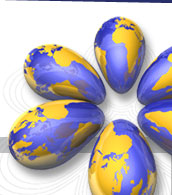|
Development of a Tasting Glass Enabling Control of Sparking Wine foam and Effervescence
Towards Optimal Tasting of Sparkling Wines and Ideal Expression of Foam and Effervescence
Since its creation, the ambition of Effervescents du Monde®, a quality-based wine competition, has been to promote and enhance the quality of sparkling wines from all over the world by annually awarding medals that are reliable and thus representative. The founding motto of Effervescents du Monde® - Diversity, Quality and Rigorousness – is mirrored in three principles:
- The organisation of a flawless competition guided by quality:
- Limit on the number of wines tasted by each judge, ideal tasting conditions (sensory isolation, rhythm of tasting, etc.), secure computer processing of results.
- Compliance with international wine competition rules.
- Guaranteed implementation of international wine scoring criteria.
- The quality and reliability of our measuring instruments:
- Rigorous selection of the panel of expert judges, based on experience, diversity of backgrounds, professionalism, determination of sensory profile and method-based training.
- Annual evaluation and scoring of each taster.
- Differentiated analytical work on foam (visual) and effervescence (tactile).
- The quest for continuous improvement in the reliability of our instruments:
- Creation of a panel of experts in tasting sparkling wines.
- Close collaboration with technical and research institutes in France and abroad.
Amongst the parameters for tasting sparkling wines, perfect effervescence is highly sought-after by leading professional tasters and by expert judges in French and international competitions. Our search for continuous improvement has led us to take part in the development of a new sensory measurement tool in partnership with Richard Marchal, lecturer and member of the Oenology and Applied Chemistry Laboratory at the University of Reims Champagne-Ardenne.
Scientific advances now enable us to get a better understanding of how bubbles form in sparkling wines and the role they play. Bubbles arise on the sides of the glass, on what are known as nucleation sites. These sites determine the number, size and persistency of the bubbles as well as the regularity of flow.
“When these nucleation sites are lacking on the sides of the glass, a sparkling wine with up to 10-12 g/l of CO2 can show almost no bubble formation and thus almost no foam when compared with the same wine served in a glass with a greater number of nucleation sites. This situation, which has been observed countless times during professional sites or during casual tasting, reflects the fact that a wine with ideal composition and physical/biochemical properties may not correspond to the winemaker’s or consumer’s expectations and may be unfavourably rated owing to poor conditions of service. To solve this problem, a standardisation process has been developed for effervescence: it enables us to obtain bubble formation that maximises the wine’s inherent capacities. This effervescence is obtained by striking the inside surface of the glass [...]. Adapting the number of such impact points to sparkling wine enables perfect control of foam and bubble quality. [...] Observation of these impact points by optical microscopy shows cracked shapes, with scaly areas and the presence of crevices that play the role of nucleation sites and enable the continuous formation of bubbles, which is necessary for foam formation.”
Richard Marchal, Lecturer – Oenology and Applied Chemistry Laboratory - University of Reims Champagne-Ardenne - From Revue des Oenologues – Issue 121 – October 2006
After several trials, Richard Marchal applied this technique to the INAO tasting glass, using 80 blows distributed over the bottom of the glass in three concentric circles. In the laboratory, bubbles are formed with all their natural characteristics, but their quantity is fully controlled (see figures below).
Today, as a sneak preview, the organisers of Effervescents du Monde® have decided to test this tasting glass in order to determine its advantages as a professional tasting instrument. To do this, we have requested the participation of expert tasters. As such, throughout 2006 and 2007, several gatherings are scheduled for such testing. The first will be held in November 2006 in the tasting room at the Imaginarium in Nuits Saint Georges (Burgundy, France). This recently inaugurated room has been designed in accordance with the recommendations from the “Institut du Goût”, headed by Jacques Puisais and Professor MacLeod, neurophysiologist and specialist in the physiology of taste.
For more Information, please contact: infos@effervescents-du-monde.com
|




